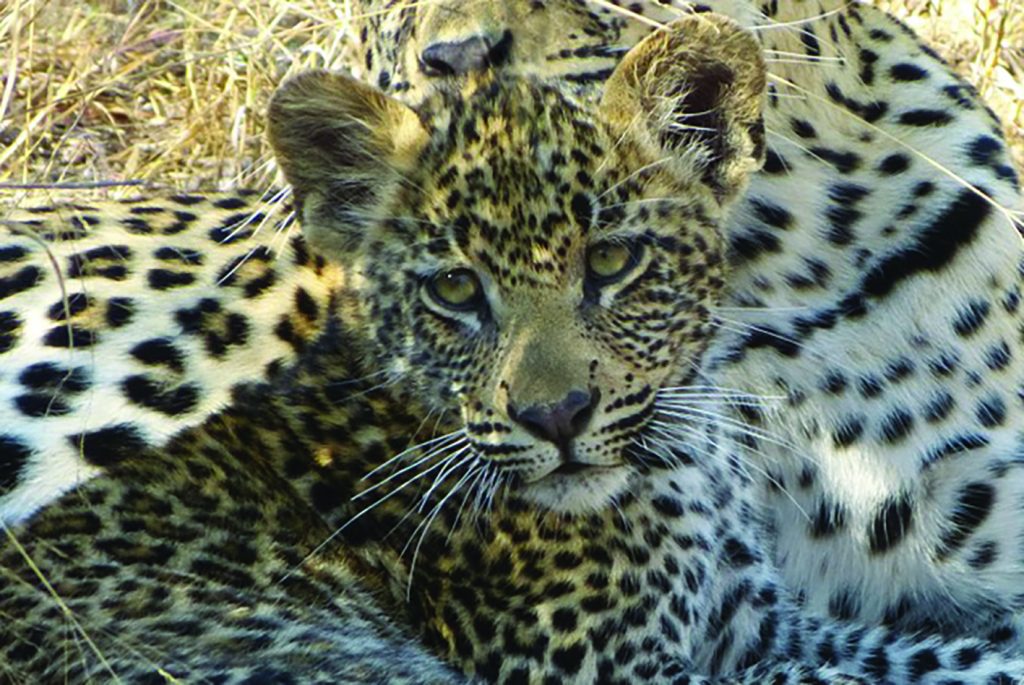Tales from the Kruger: The Wildlife of South Africa
Talk by Julie Harrison

Those who came to this talk by Julie Harrison in Kibworth Community Library on 20 April were given an enthralling account of the animals she and her husband Ian had encountered during their eight trips to the huge Kruger National Park in North East South Africa.
Their first visit Julie described as “life changing” and they have been returning whenever possible as the call of Africa is now clearly permanently in their ears.
Kruger Park has no fences
The Kruger Park covers an area of 19.485 square kilometres and has no fences to retain the animals other than the small ones around the camps where visitors stay. There are 2000 miles of roads and more dirt tracks. The best (and safest) way to view the wildlife is from an organised game drive, usually in an open jeep, with a driver and guide.
Ian and Julie had taken many of these drives and showed us marvellous photos of the big five animals ie buffalo, elephant, rhino, lion and leopard. Some animals had put in very close appearances and we were able to hear the deep bass rumble recorded from nearby elephants communicating with each other.
Close up of a lion
Although the sheer darkness at night in the Kruger is almost unimaginable in this country, they nevertheless were still able to see many animals, including a very close lion. Julie’s photo of this encounter is quite stunning, not least for her courage in staying close enough to take it!
Leopard is favourite
Julie’s own favourite is the leopard which is usually solitary but we saw some beautiful pictures of a leopard family and some reclining in trees with their kill.
An interesting fact about the rhino is that the name white rhino is a misnomer. It actually means wide not white and refers to the broad upper lip which facilitates a different diet from that of the black rhino. Both species are seriously under threat as numbers have diminished rapidly in recent times.
Buffalo remain the most dangerous
Surprisingly the enormous buffalo is deemed the most dangerous of the big five, due to its ability to charge at 30 mph. The honey badger apparently is the fiercest animal. It is also resistant to the venom of the black mamba which is deadly for most other species including humans.
Hippos kill 500 people a year and of the reptiles, the puff adder causes most deaths since it is easily trodden on, being slow to move out of the way.
Julie recounted several incidents of fairly narrow escapes involving elephants, lions, snakes and more.
She was however keen to point out that these incidents were rare and the guides are so experienced they know how to back away from potential trouble very quickly.
There were so many glorious photos taken by both Ian and Julie. The colourful bird life was extraordinary as were the landscape views they used to close this fascinating and engaging talk.
I couldn’t help admiring their enthusiasm, their clearly love for wildlife in all its forms and also their bravery in exposing themselves to hair raising situations on occasion but going back repeatedly for more. They explained that once you have heard the call of the African fish eagle, you simply have to go back and several members of the audience agreed.
Afterwards a delicious selection of cakes was served with tea and Monica, Suzy, Julie and Ian were thanked for providing us with a most interesting and memorable afternoon.
Carol Townend




 Kibworth Scouts support the Coronation
Kibworth Scouts support the Coronation

